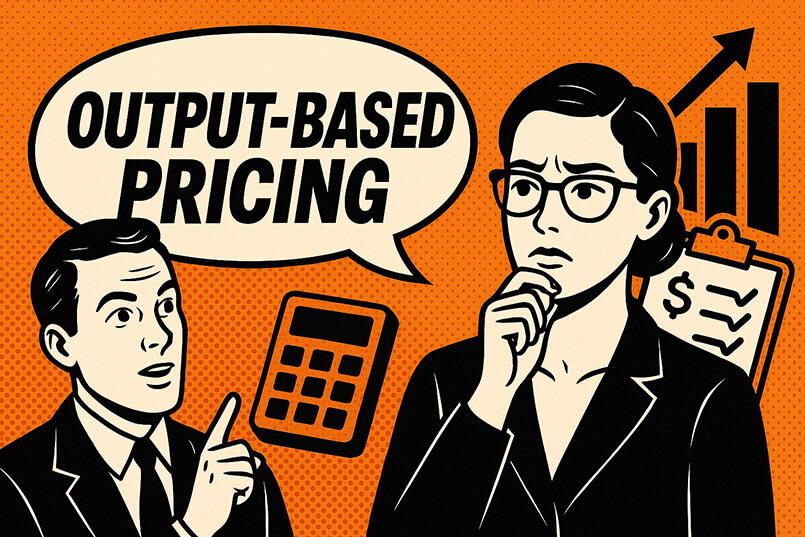Zero-based budgeting is an accounting practice that forces managers to think about how every dollar is spent in every budgeting period.
Value-based agency compensation is where the agency is compensated partially or based on the agreed outcomes or outputs.
Many Fortune 500 companies and private equity firms have embraced Zero-Based Budgeting. Therefore, it is timely to review how this approach to budgeting can impact or influence how agencies are compensated for their services.
This move to zero-based budgeting means more organisations are considering changing their agency compensation model to better align the agency fee with the ZBB approach’s intentions.
What is Zero Based Budgeting (ZBB)?
Unlike the top-down budgeting that many organisations and marketing functions currently use, ZBB is a bottom-up approach. This means instead of taking last year’s marketing budget and adjusting it to either inflation, the scope of the marketing plan, or the like, you commence at zero and build the budget based on and aligned to the tasks required, but more specifically, the results required.
ZBB is about creating a budget based on investment and the projected return on that investment. It requires marketers to link the budget invested to the return on that investment or the delivery of a specific result or outcome from the marketing plan’s inputs and outputs.
The principle of ZBB is about investing in the value of the outcome, but the current agency compensation models, the resource-based models, typically hourly rates and retainers, are based on costs. The cost paid for the agency outputs is based on the cost of the inputs and not on the value of the investment or the value of the output or outcome.
The cost to deliver a specific output required by the marketing strategy, designed to deliver a specific outcome or result, is the same whether the value of the outcome is a dollar or millions of dollars.
What is Value-Based Compensation (VBC)?
VBC focuses on the value of the agency’s outputs rather than the cost of the inputs. The principle is to value the agency’s outputs. These values are calculated based on historical cost data to set a cost baseline, but more importantly, they are informed by the value of the business for which the work is being undertaken and the potential return on the investment.
The operating model for the VBC approach we have found most successful is based on producing a pricing matrix for the defined agency outputs required by the agency and brand. The pricing matrix is developed for tangible and intangible outputs.
Tangible outputs are where the deliverable is defined and measurable (e.g., television campaign, Landing Page, Radio Commercials, Email campaigns).
Intangible outputs are agency activities that do not have a specific measurable output (e.g., Brand strategy, Communications strategy, Channel strategy).
It also takes into account the work’s iterations (e.g., origination, Refreshing / Updating, Adapting).
Most importantly, it has pricing based on the particular maturity and the relative value of the brands to the business or organisation. (Eg. New product, High Value, Declining brand)
Using this pricing matrix, which provides the price value for the agency to deliver the specific output, a marketer can align the agency cost to the value of the activity as part of their Zero-Based Budgeting process.
Cost versus Value in Agency Compensation
A great example of the shortcomings of the cost-based model for agency compensation, which we have encountered often, is when an organisation has two or more brands of different value within the same category.
For simplicity, if all of the brands were to use television and require the production of a television commercial, then the agency could argue, and do, that the cost of creating and producing that commercial is the same for each brand. After all, the process and the resources required are the same, so their costs are the same, and so the cost to the brands is the same.
But what if the value of each of those brands to the organisation is significantly different? If Brand A was worth 100 times the value of Brand B and Brand C is half the value of Brand B?
What if, because of this, the media investment for Brand A is 50 times more than Brand B and likely to be used for a year or more, while Brand B and C only have enough media investment for a month or two? Does it make sense that the agency cost to create and produce for all three brands is exactly the same?
The difference in the marketing budget, using the ZBB methodology, would naturally have apportioned a larger marketing and media budget for Brand A, which can deliver greater value to the company, and a commensurately smaller budget for Brand B and Brand C.
How VBC can support ZBB
The beauty of VBC is the ability to align the agency fee to the brand’s values and the budget set for the brand based on ZBB. This means that brands that require greater value to the organisation also have a higher level of investment in the fee paid to the agency. Meanwhile, brands that are of less financial value pay not for the cost but for the value the output represents.
This is not a unique proposition. It is just different from the most common industry approach at the moment. But if you consider the media commission system in place for more than a century, the agency was paid based on the media investment, not the number of hours it took, and the media investment was directly related to the value of the brand the organisation was investing.
The VBC pricing matrix is the same approach. Still, as media cost is no longer directly proportional to the production value, the agency fee is set as a price, much like the commission sets the agency fee.
While many have rejected the VBC approach in the past because of the challenges in setting the value to a price and precisely defining a scope of work, the application of the ZBB approach to marketing means that the VBC compensation model makes it much easier for marketers to align agency costs to financial and strategic value.
While there are still challenges in implementing this approach, we have now implemented it for a number of major advertisers, some who are using ZBB and others who are not but wanted to achieve greater alignment to value in the agency fees.
Learn more about how TrinityP3’s Agency Commercial Evaluation service ensures that your agency fee will drive performance.




